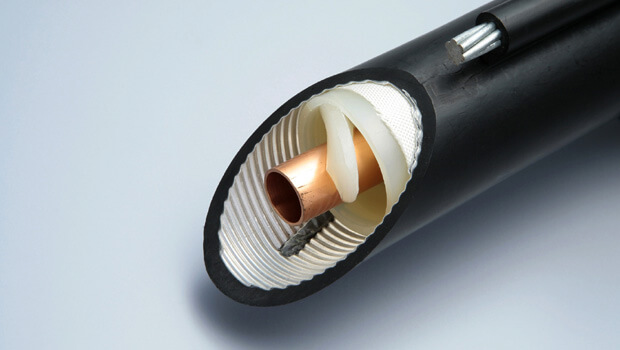What is a Leaky Coax Cable

Radio coverage in tunnels is an essential topic of study, especially as more applications require wireless coverage in underground spaces. Leaky coax cable, coupled or radiating leaky mode cables, has been recognized as a viable method of establishing base station antenna systems in such areas. This cable type transmits radio frequency signals using energy and wave radiation patterns on its outer conductor. Through simulations and calculations performed with a modified ray tracing algorithm, it has been demonstrated that leaky cables can achieve better radio frequency (RF) coverage than distributed antennas in signal level versus frequency for different tunnel lengths and cross-section areas.
Leaky Cable for Emergency Communications
Leaky coaxial cables are preferred for tunnel coverage due to the difficulties of using a distributed antenna. By using leaky cables, radio frequency signals can be sent by slotting its outer conductor, and channels can be established based on the wave and energy radiation patterns emitted. This base station system is essential for various applications in underground environments, such as mobile communication (GSM, PCN/PCS, DECT), emergency communication services on roads, radio coverage of railway and metro tunnels, and more. Using leaky coaxial cable deployment, considering both transmission and threshold power levels, a novel implementation of the Ray Tracing algorithm is used to predict radio coverage in tunnels accurately. This improved method makes electric field coverage smoother and easier to predict. Radio communication within tunnels is greatly enhanced when this leaky cable deployment is used.
Leaky coaxial cables provide the structure for electromagnetic waves to propagate as Transverse Electromagnetic (TEM) waves. This cable type is shielded by an outer conductor. This prevents electromagnetic radiation from being influenced by the propagated wave within the cable. However, slots on the outer conductor allow some energy to leak between the cable and its environment. This adjustable coupling capability allows for smoother electric field coverage and better radio communication quality, depending on the amount of electromagnetic intensity, installation method, and environmental conditions within a tunnel. Due to their metallic characteristics, 75 Ω cables have been replaced with more efficient 50 Ω cables to further reduce signal loss in tunnels. These new cables help maximize radio performance and enhance overall coverage within tunnels.
Essential Parameters of Leaky Cables
Two essential parameters of leaky cables are cable attenuations (or longitudinal attenuation) and coupling attenuations. The coupling attenuations refer to the ratio between radiated signal level and the received signal level by a λ/2 dipole antenna or λ/4 monopole at a specific distance from the cable. This ratio can vary depending on the location of the cable, distance, and orientation of slots. Leaky cables can be divided into two models: radiating model and coupled model.
In the radiating mode, an electrical field is generated by slots located on the cable’s outer conductor. These slots are typically spaced at half wavelength distances of radiation signals for maximum output. Meanwhile, in the coupled mode, electromagnetic fields are scattered. It is due to induction on the cable’s outer conductor. This produces a current that radiates in a pattern similar to that of a long electric antenna. The radiation pattern in this mode can also be modeled using dispersed or deterministic models for further accuracy and precision in predicting radio coverage in tunnels.
Contact us today if you want to learn more about Leaky feeder cables.
Get In Touch With Us Today
If you’re looking for a reliable communication solution for your mining operations, consider the leaky coax cable products from Becker Wholesale Mine Supply. We offer high-quality leaky cable solutions that are designed to meet the unique needs of mining environments. Contact us today or visit our website.